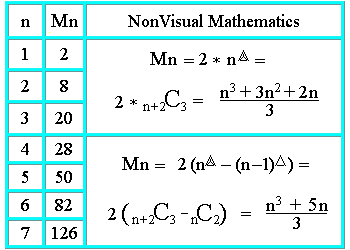|
Without going into details, we will note that a «shell model» has been existing in nuclear physics for some time leading to numbers 2, 8, 20, 40, 70, 112,168. Only the first three numbers coincided, and it required essential improvement of the theory. http://depni.npi.msu.su/lectures/new/l_win5.html In N. J. A. Sloane: Database of Integer Sequences, Part 16, this sequence (A007290) have note: V. B. Priezzhev, Series expansion for rectilinear polymers on the square lattice, J. Phys. A 12 (1979), 2131-2139. The sequence (A018226) - 2,8,20,28,50,82,126 have note: Magic numbers: atoms with one of these numbers of protons or neutrons in their nuclei are considered to be stable. The theory, in opinion of some scientists, still reminds of certain shamanic rituals. It is based not on deep comprehension, but on almost intuitive establishment of certain rules, defined by operation with indexes and numbers which quite deserve to be called magic. It is natural to remember here the Pythagoreans with their music of numbers controlling destinies of the worlds and people! ( È.Ë. Ðàäóíñêàÿ «ÍèÒ.Ðàðèòåòíûå èçäàíèÿ», 1998 «Áåçóìíûå èäåè» http://www.n-t.org/ri/rd/bi16.htm). Let's show the possibility of deducing general formulas
of both sequences, which appear recursive.
Magic numbers for nuclei
Figure 25. Analytical expression of magic numbers (Mn) for the nucleus of an atom. (n+2C3 - nC2) means
cutting a penultimate layer - a triangle - from a tetrahedron.
|
